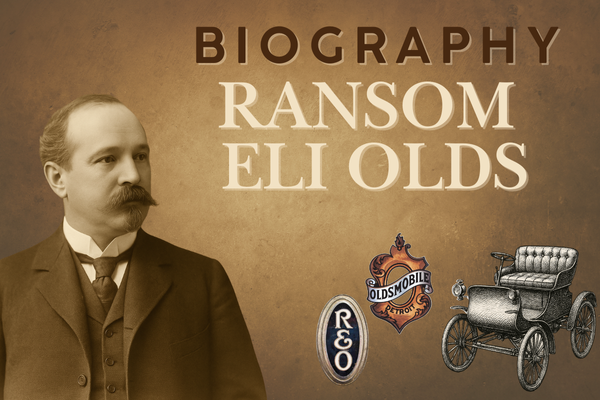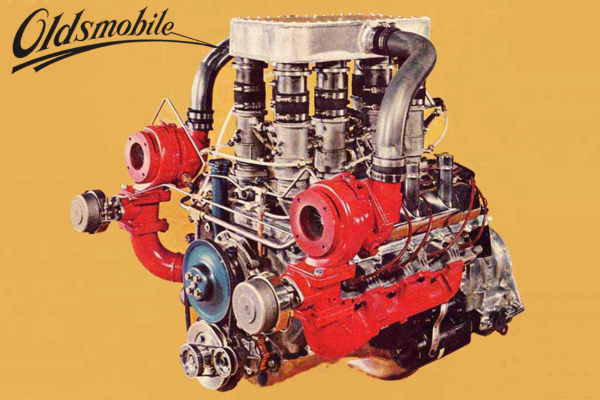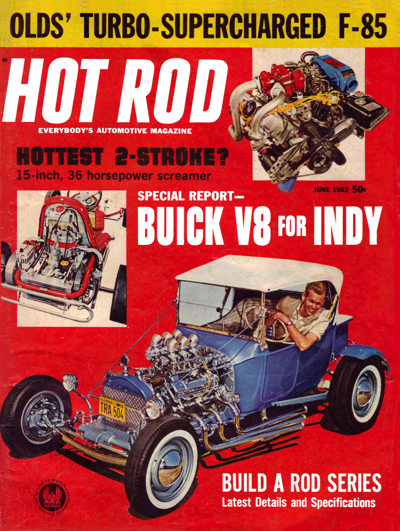History: Packard V-8 (1955-1956)
In 1954, shortly after the merger with Hudson, AMC President George W. Mason made a verbal agreement with Packard that the two companies would supply parts for each other as appropriate. This was based upon ongoing talks about a merger of the two smaller companies. As a show of good faith, AMC started using this agreement to buy Packard V8s in late 1954 for use as the main powerplant for the 1955 Nash Ambassador and the newly acquired line of Hudson Hornets.
In 1955, the engine supplied was the base Packard “Clipper” 320 cu. in V8, though the 352 cu. in V8 was available. It is said that Packard did not want their more powerful 352 installed in the lighter Nash and Hydson cars as the performance would embarrass Packard and pose questions from their loyal owners. In fact, the first 320 engines were sent to AMC with super-thick head gaskets, reducing the compression 7.8:1. After AMC complained, the proper head gaskets were fitted and the compression rose to 8.25:1.

The engine was also supplied with the Packard “Ultramatic” automatic transmissions because the unit that AMC was using for its 6 cylinder cars was not strong enough to handlle the Packard’s torque, nor would it bolt to the Packeard engine without a new transmission case, a far too expensive tooling operation for such a small amount of vehicles.
In 1956 was supplied with the larger 352 cu. in. version that was now used across the board by Packard. Interestingly, Packard told AMC that they intend to supply AMC with 352s using the old 320’s 2-bbl manifold, ostensibly to ensure that Packards would be able to outstrip the performance of the Ambassador and Hornet. Again, when AMC complained, the 4-barrel was fitted.
Packard’s side of the deal – to buy AMC parts was only handled half-heartedly. They did send AMC some bids, but the responses by AMC were rejected by Packard as “too expensive”, though AMC had dealt with Packard fairly on the pricing, in fact more so than Packard’s pricing on the V8/transmission deal. Shortly after, Mason passed away and George W. Romney, AMC’s new penny pinching CEO, spoke out against the potential merger, which only fueld the fire of an unfair deal on both sides. He decided against further relationships with Packard and let it be known that the V8 deal would expire when the contract was over.
Packard told Romney that they intended to end the deal sooner, as they needed their total production for the hot looking new Packards. An incensed Romney ordered his engineering department to develop an in-house V8 “tomorrow”. Thus the deal that had originally been designed to be the precursor to a formidable merger, ended barely two-years after it started.
Comparative Size, Dimensions, and External Specifications
The table below shows the Gen 2 and Gen 3 engine external specifications and weights, beginning with 1966 290 V-8 and including all low and high deck blocks, and ending with the 401 V-8. Below is a picture of how to measure to determine and identify the engines. Also enclosed is a chart showing the size and weight of the engines and how to determine the dimensions from the enclosed picture.

AMC Engine Dimensions
| Engine | Displacement | A Length | B Length | C Height | D Height | E Width | Distributor | Sump | Started | Oil Filter | Average Weight |
|---|---|---|---|---|---|---|---|---|---|---|---|
| AMC Gen 1 | 250/287/327 | Varies | 27.75 | 24 | Varies | 24.12 | rear | rear | right | left rear | 601/651 |
| AMC Gen 2 | 290/343/390 | 28.5 | 29.25 | 20.75 | 29. | 21.25 | front | rear | right | right front | 540/600 |
| AMC Gen 3 | 304/360/401 | 28.75 | 29.25 | 21.75 | 29.5 | 21.50 | front | rear | right | right front | 545/605 |




